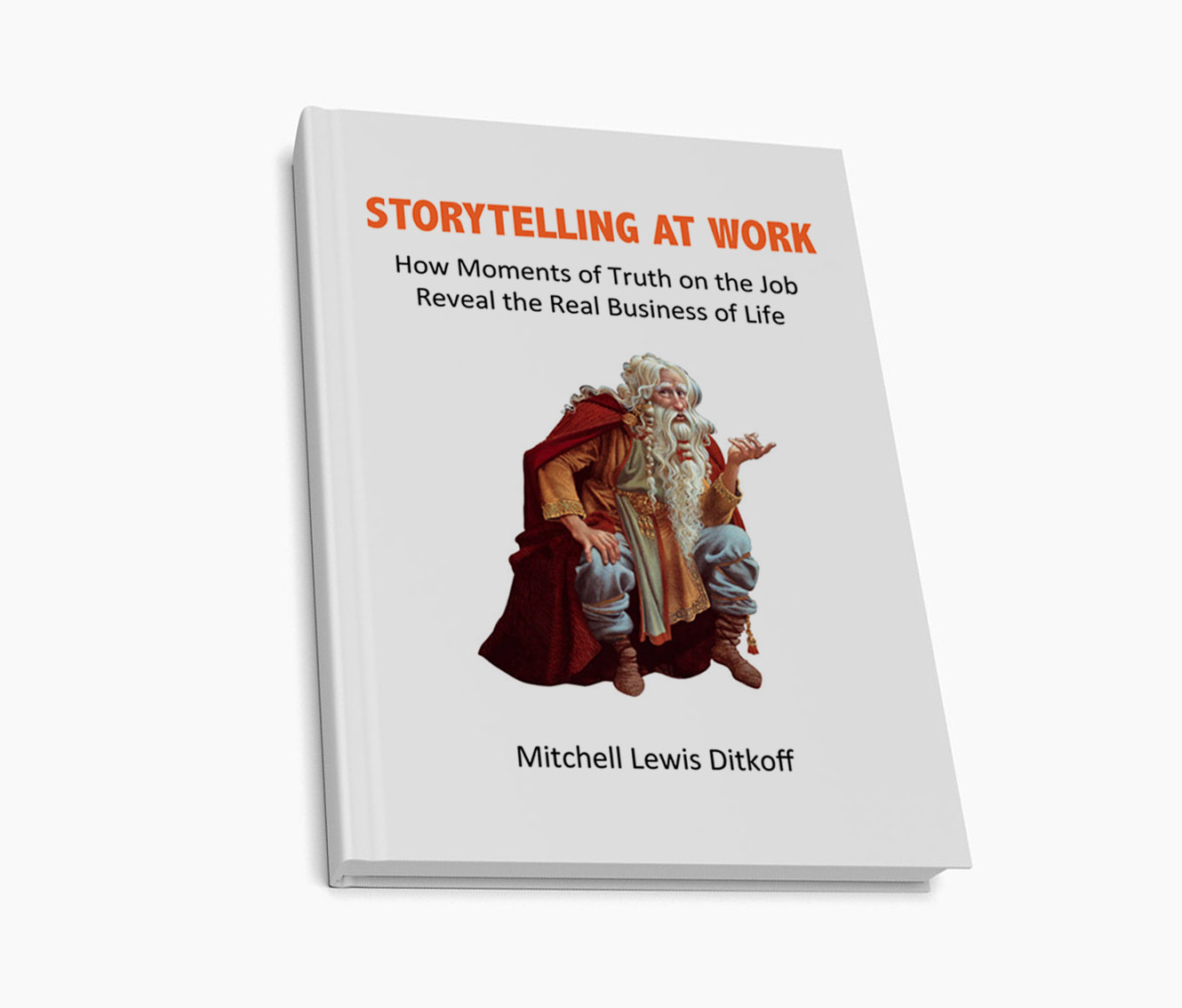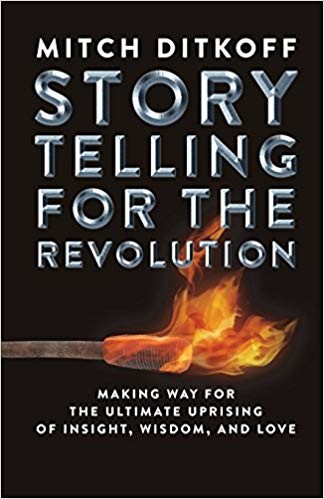The Power of Tears

Social media did not exist when I was 26. But social work did -- a profession dedicated to improving the quality of life for individuals, groups, families, couples, and communities.
As the Golden Boy of an upper middle class Jewish family from New York, social work was not on my radar screen. The pay wasn't good enough. The status wasn't high enough. And the hours weren't short enough.
So when my neighbor, a University of Virginia Medical Center pediatrician, invited me to become the social worker for a new, federally-funded "early intervention" program I was only half listening. Yes, I was social and yes, I knew how to work, but counseling parents of multi-handicapped infants did not seem like a talent I possessed.
My neighbor, the pediatrician, saw it differently.
"We have a mentor already picked out for you," she explained. "And besides, we don't want professional social workers. We want people who can learn on the job, so we can roll this program out across the country."
The case she made was compelling. And the scope of the project was inspiring -- for me to be part of a team of health care professionals, teachers, and psychologists who would provide services to families into whom a handicapped child had been born. The goal was to do everything possible to keep the families together -- a challenge that, historically, had been proven difficult to do, given all of the stressors and dysfunctional behaviors that manifest when a handicapped child enters the family system.
My job? To be the first person, from our team, on the scene whenever a physically handicapped child was born at the University of Virginia Medical Center or identified, a few months later, to be showing the signs of serious developmental delay.

The protocol was a simple one. I would get a phone call from the hospital, drop everything I was doing, and then meet with the doctors and parents. The doctors were glad to see me because it meant they wouldn't have to deal with all those untidy emotional issues. The parents were not glad to see me because my appearance confirmed the fact that something was definitely wrong with their child -- not at all what they were expecting when packing their bags the night before and wondering how many birth announcements to send out.
For two years, that's what I did, working closely with 20 families of handicapped children living within 50 miles of the University of Virginia Medical Center.
I learned a lot and felt a lot. But the one thing that stands out in my mind, some 41 years later, has nothing to do with facilitating parent groups, making home visits, or navigating the bureaucracy of a flawed medical system. It has to do with a young, single mother and the power of tears.
Lorraine Thompson was 17 when I first met her in a flourescently lit waiting room. Her son, Michael, was three months old. Neither of them was in good shape. Lorraine was overwhelmed, highly stressed, and barely said a word. Michael was twitching, kicking, and drooling, having been diagnosed with cerebral palsy just days before.
Seeing how much pain this young woman was in, my instinct was to comfort her, to be a safe haven from all the suffering in her life. And so, for the first few months of my weekly counseling sessions with her, that's what I tried to do -- bringing her tea, listening, and reminding her of all the many medical center resources available to her. After each session, I wrote up my notes and carefully tracked whatever progress she had been made since her last visit.
Progress was being made. Lorraine seemed to brighten in my presence and come out of her shell. My social work mentor saw it differently. To her, the progress being made wasn't progress at all, but my own unconscious strategy to protect myself and Lorraine from what really needed to happen.
My good intentions were getting in the way. What needed to happen, my mentor explained, was for me to stop being so damn benevolent and let Lorraine Thompson, the 17-year old, semi-catatonic, single mother of a severely handicapped son fall apart. She had to, as my mentor explained, "fall to the place she could fall no further from."
At first, I balked at this suggestion. Hey, I was the only person in the world this woman was receiving any solace from and now I was being asked to withdraw it? It made no sense. But after listening to my mentor wax on about "the healing process", my task became clear. The next time I met with Lorraine, I would let her fall apart.
Three weeks passed. Lorraine and her son, as they had been accustomed to doing for the past three months, met me in the parents lounge. We began as we usually did, me asking Lorraine how her week had been going. After a few minutes of chit chat, she started talking about the tough stuff -- the lack of support from her mother, her son's constant gagging on food, and a seemingly endless stream of complaints. But instead of responding with a hand on the shoulder or light-hearted diversion, I said nothing. I just sat there, silent, looking at her.
Lorraine held my gaze for about 10 seconds, then started crying. The crying turned to sobbing and the sobbing turned into something I have no name for. I continued sitting there in silence, remembering the sage counsel of my mentor. Let her fall to the place she can fall no further from.
It took a while, but it happened. Lorraine cried all her tears. When she was done, I reached out and held her hand. At first she wouldn't look at me. Then she did. There was a great deal of relief in her eyes.
SO WHAT? I wonder how much time, in my life, I've spent propping other people up when all that was needed was simply holding the space for them to let go. In the name of benevolence, compassion, and humanity, I've performed any number of seemingly heartfelt moves designed to relieve the suffering others. And while all of it has been well-intentioned, there have been many times where the highest expression of wisdom would have been to do nothing other than "hold the space" -- a space where no props and pep talks were needed -- a space where true healing could begin.
NOW WHAT? Is there a Lorraine Thompson in your life -- someone going through a hard time who you've been propping up with your good intentions? Are you willing, the next time you see him or her, to stop trying to save them and simply let them feel what there is to feel?
Excerpted from Storytelling at Work, to be published in October
Idea Champions
Some of my HuffPost articles
Posted by Mitch Ditkoff at 07:11 PM | Comments (0)
April 24, 2015Thank You!
Posted by Mitch Ditkoff at 03:08 AM | Comments (0)
April 10, 2015The Four Lenses of Innovation

A wonderful new book on innovation, by Rowan Gibson, THE FOUR LENSES OF INNOVATION: A Power Tool for Creative Thinking, has recently been published by Wiley. Rowan Gibson is the real deal -- a lucid, passionate, creative thought leader in the field of innovation. If you are looking for a simple way to cut through a lot of the ho hum mumbo jumbo about innovation, this book is for you.
Wiley Press announcement
Available on Amazon
Posted by Mitch Ditkoff at 03:09 PM | Comments (0)
April 09, 2015The 8 Dimensions of a Brainstorm Session

Most people think brainstorming sessions are all about ideas -- much in the same way Wall Street bankers think life is all about money.
While ideas are certainly a big part of brainstorming, they are only a part.
People who rush into a brainstorming session starving for new ideas will miss the boat (and the train, car, and unicycle) completely unless they tune into the some other important dynamics that are also at play:
1. INVESTIGATION: If you want your brainstorming sessions to be effective, you'll need to do some investigating before hand. Get curious. Ask questions. Dig deeper. The more you find out what the real issues are, the greater your chances of framing powerful questions to brainstorm and choosing the best techniques to use.
2. IMMERSION: While good ideas can surface at any time, their chances radically increase the more that brainstorm participants are immersed. Translation? No coming and going during a session. No distractions. No interruptions. And don't forget to put a "do not disturb" sign on the door.
3. INTERACTION: Ideas come to people at all times of day and under all kinds of circumstances. But in a brainstorming session, it's the quality of interaction that makes the difference -- how people connect with each other, how they listen, and build on ideas. Your job, as facilitator, is to increase the quality of interaction.

4. INSPIRATION: Creative output is often a function of mindset. Bored, disengaged people rarely originate good ideas. Inspired people do. This is one of your main tasks, as a brainstorm facilitator -- to do everything in your power to keep participants inspired. The more you do, the less techniques you will need.
5. IDEATION: Look around. Everything you see began as an idea in someone's mind. Simply put, ideas are the seeds of innovation -- the first shape a new possibility takes. As a facilitator of the creative process, your job is to foster the conditions that amplify the odds of new ideas being conceived, developed, and articulated.
6. ILLUMINATION: Ideas are great. Ideas are cool. But they are also a dime a dozen unless they lead to an insight or aha. Until then, ideas are only two dimensional. But when the light goes on inside the minds of the people in your session, the ideas are activated and the odds radically increase of them manifesting.
7. INTEGRATION: Well-run brainstorming sessions have a way of intoxicating people. Doors open. Energy soars. Possibilities emerge. But unless participants have a chance to make sense of what they've conceived, the ideas are less likely to manifest. Opening the doors of the imagination is a good thing, but so is closure.
8. IMPLEMENTATION: Perhaps the biggest reason why most brainstorming sessions fail is what happens after -- or, shall I say, what doesn't happen after. Implementation is the name of the game. Before you let people go, clarify next steps, who's doing what (and by when), and what outside support is needed.
Brainstorm facilitation training
Posted by Mitch Ditkoff at 01:17 AM | Comments (4)
April 03, 2015What On-The-Job Wisdom Lessons Are Most Compelling to You?

If you have four minutes and are interested in the topic of storytelling in business, I invite you to respond to my online poll -- your chance to tell me what themes about storytelling in the workplace are most meaningful to you. Thank you!
If you want to get an email alert when my book is published
Big thank you to Jesse Ditkoff for the graphics
Posted by Mitch Ditkoff at 12:53 PM | Comments (0)
April 02, 2015STORYTELLING AT WORK: The Mailing List

If you would like to receive an email alert when my forthcoming book is published in the Fall, just click this link and write your email address in the space provided. Takes 30 seconds.
Below are a few excerpts from the book, previously published in the Huffington Post.
I'm From Woodstock. Yes, I Am!
Arm Wrestling the CIA
The Afghani Cab Driver
AN EXCERPT FROM THE BOOK
As the story goes, 2,500 years ago, Buddha gave a wordless sermon to his disciples. All he did was hold up a single white flower -- a lotus. That's it. No words. Just a flower. All his disciples were mystified, except, that is, Mahakasyapa, a young monk who immediately smiled, signifying the direct transmission of wisdom from Master to student -- a moment referred to in Buddhist literature as "tathagata", the ineffable nature of suchness.
Something within Mahakasyapa instantly understood the non-verbal essence of what Buddha was communicating. He got it in a flash. No thought was necessary, no analysis, no intellectualization. It was, as if, a veil had lifted and he got to experience something profound that was previously inaccessible to him.

For want of a better phrase, let's call the young monk's recognition a "moment of truth".
The good news for the rest of us is that a person does not need to be a monk to experience a moment of truth. Nor do all moments of truth need to be "spiritual", historically significant, or worthy of inclusion in future scriptures.
Moments of truth are not only for everyone, but they come in all varieties -- small, medium, and large -- spontaneously occurring, unplanned happenings that have, embedded within them, the potential for great learning, insight, and wisdom. Simply put, a kind of Red Sea parts and a meaningful "lesson" is learned, even if no teacher is present. We all have them, though, like dreams, they are easy to forget, dismiss, or undervalue.
The catalyst for a moment of truth can be anything. For the young monk, it was a flower. For you, who knows? A chocolate bar? A glance from a beggar? Missing a train? A nasty divorce? Getting lost? Being rescued? Almost dying? A dream? A blues song you hear on the radio? It really doesn't matter what, as long as it sparks an inner shift that that moves you beyond old assumptions, habits of mind, and outdated beliefs so you can experience the magic of life in a fresh, new way.
If you deconstruct the stories we tell, you'll soon discover that most of them turn out to be our attempts to give shape to these moments of truth -- our verbal deciphering of a moment, in time (or outside of time) that had great significance for us, even if that moment was invisible to others.
Unspoken, these moments of truth remain hidden, stashed away inside us like buried treasure or unopened love letters. Expressed, especially in the form of story, they uplift, inspire, and empower, pollinating great fields of wisdom -- in yourself, the people you share them with, and the people they share them with. On and on and on it goes, countless moments of truth circulating the planet at the same time, opening minds, opening hearts, and helping awaken us all to a richer, fuller life.
Get an email alert when the book comes out
Posted by Mitch Ditkoff at 04:27 PM | Comments (0)















